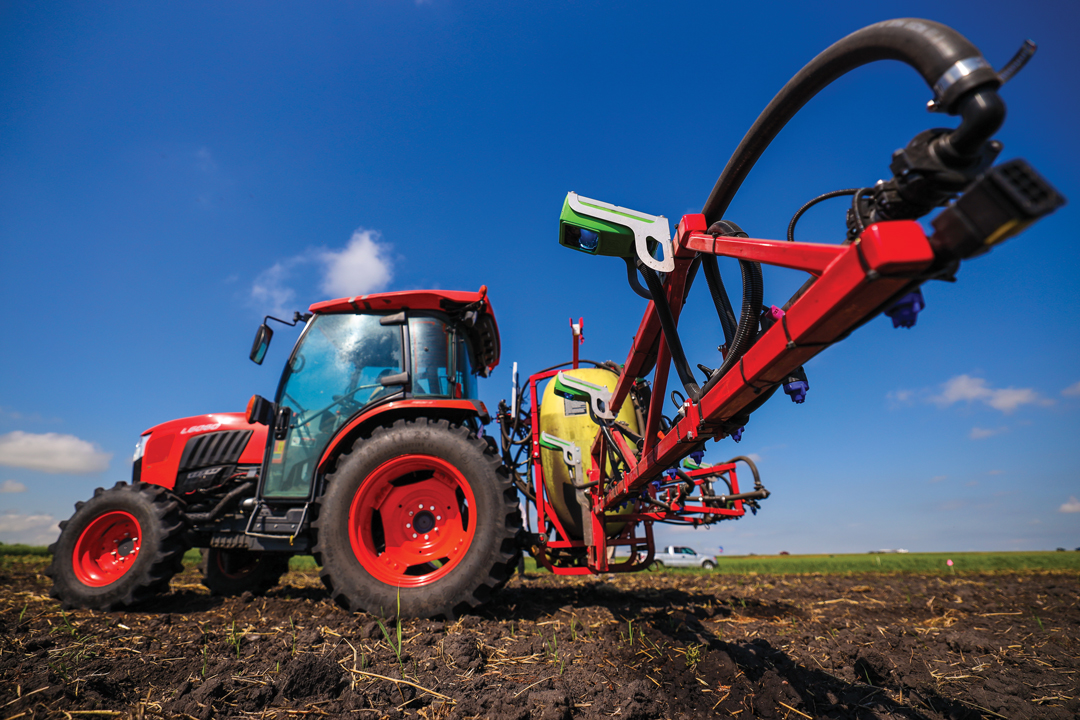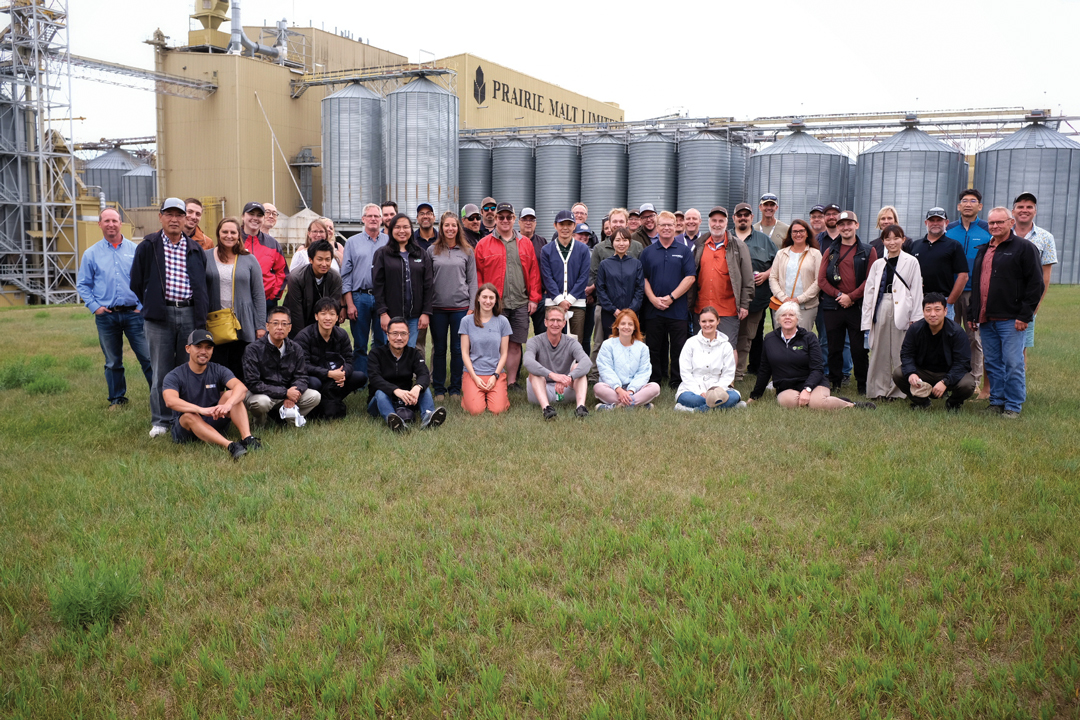SPRAY TECH HITS THE SPOT
BY DANIEL STEFNER • PHOTO COURTESY OF OLDS COLLEGE
The smart agriculture and small plot crop research teams at Olds College of Agriculture and Technology have worked on an optical spot spraying project for the last three seasons. Carried out by the Olds College Centre for Innovation (OCCI), it aimed to assess the equipment and field performance of the WEED-IT Quadro system.
Replicated field tests have indicated the system consistently reduces chemical usage. Its ability to detect and spray its targets was relatively unaffected as speed increased. OCCI also assessed the equipment’s ability to detect targets ranging in size from one to four square centimetres. On average, WEED-IT detected one-centimetre targets between 15 and 50 per cent of the time. However, consistency jumped to greater than 90 per cent at a target size of 2.25 centimetres and larger. Speed and ambient lighting levels had negligible impact on performance.
Most recently, the study has focused on small field trials. Various types of treatments and controls were applied and replicated at pre-seed timing to observe the effects on the weeds sprayed, in-season weed populations and harvested yield.
The WEED-IT system is able to apply three types of treatment: flat rate, spot spray and dual spray. Numerous built-in sensitivities reduce interference from stubble and other background factors. The operator can also set the spray margin around the target to 50, 100, 150 or 200 millimetres. In spot spraying, only the targets detected are sprayed. The dual application combines spot spray with a flat rate application to cover undetected targets—typically less than 2.25 square centimetres in size.
In 2021, the study included a pre-seed application of herbicide in barley stubble where canola was to be grown. In comparison to the flat rate applications, the total solution use was reduced by 68 to 97 per cent in spot spray mode and 19 to 26 per cent in dual mode. In 2022, the approach was repeated in canola stubble where barley was to be seeded. In this iteration, total solution use was reduced by 88 to 98 per cent in spot mode against the flat rate applications.
The variance in reduction is related to the weed size and density present in the field in combination with the spot spray settings. Results of the 2021 and 2022 trials were very similar in that they indicated there was no difference in yield between the treatment types. However, the treatment zones that received no application and spot spray applications had higher weed populations throughout crop emergence in comparison to the dual mode and flat rate treatment zones. This indicates that while spot spraying is effective on larger weeds, it is unable to detect and spray small emerging weeds, the result is a higher weed population sooner after spraying when compared to a typical flat rate application. For a farmer who implements spot spraying for pre-seed application, this may indicate the need to perform in-crop applications of herbicide earlier in the season in comparison to “normal” timing of application, or employ the use of dual spray mode functionality.
As the OCCI team develops related research topics in the future, these may include determining how to make informed decisions regarding spot spraying. For example, what quantity of herbicide should be purchased, and what amount of solution should be mixed in advance of spot spraying? OCCI is also assessing opportunities to trial optical spot spraying equipment in a green-on-green scenario in which target weeds are present in an emerging crop.
Daniel Stefner is a smart agriculture project lead and farm liaison with the Olds College Centre for Innovation.







Comments